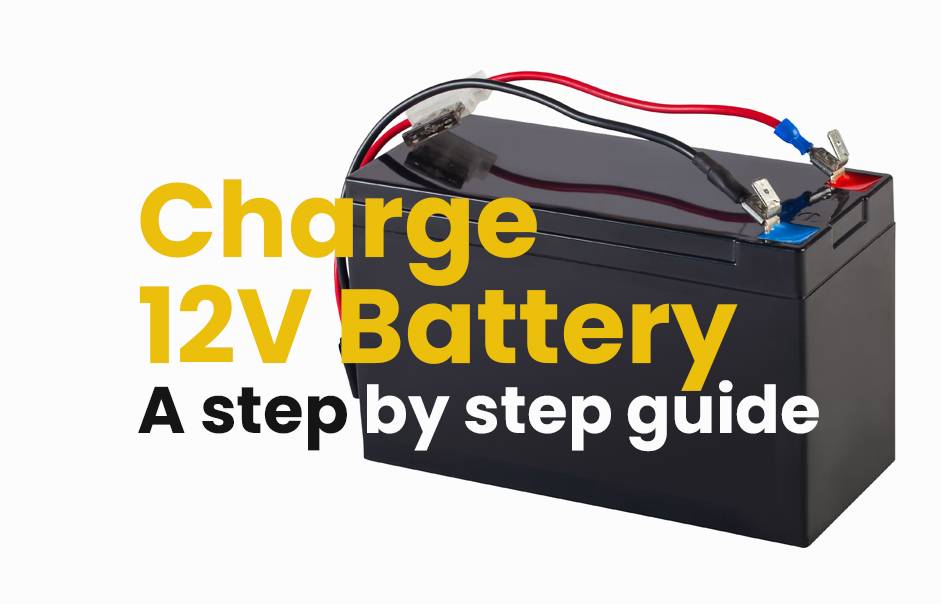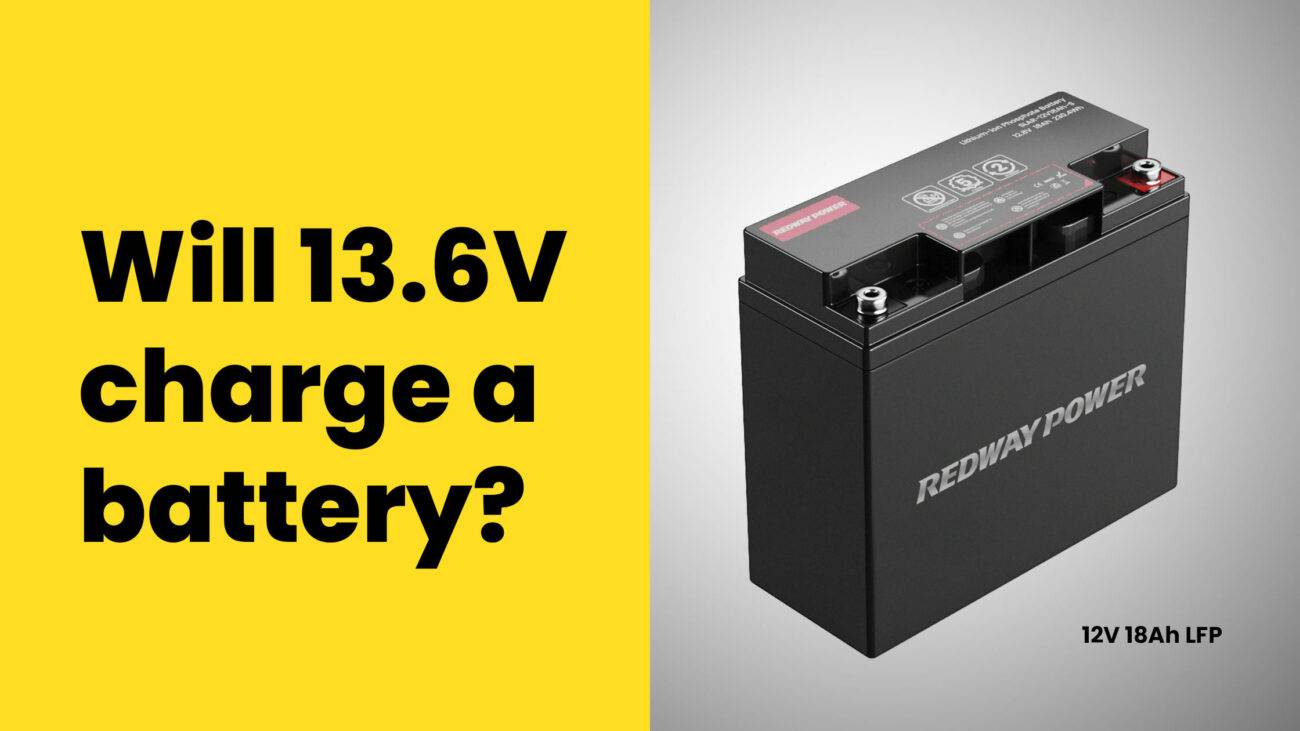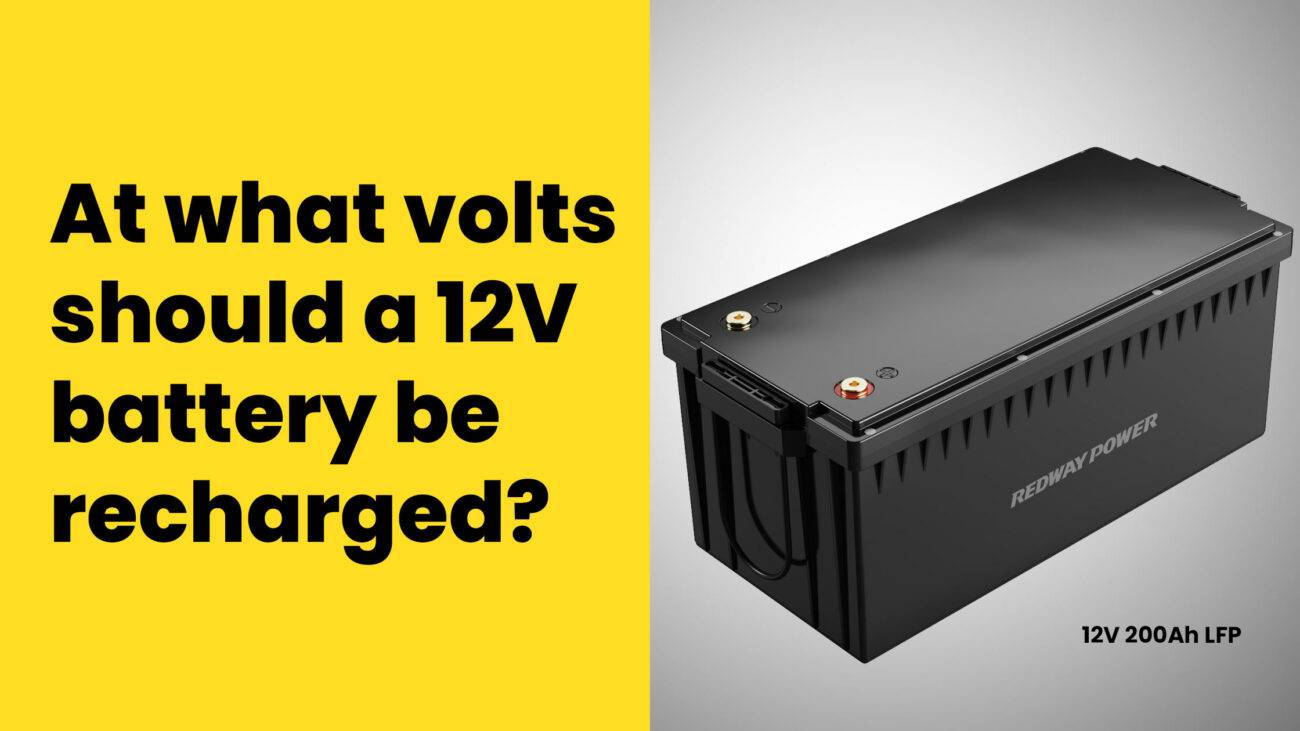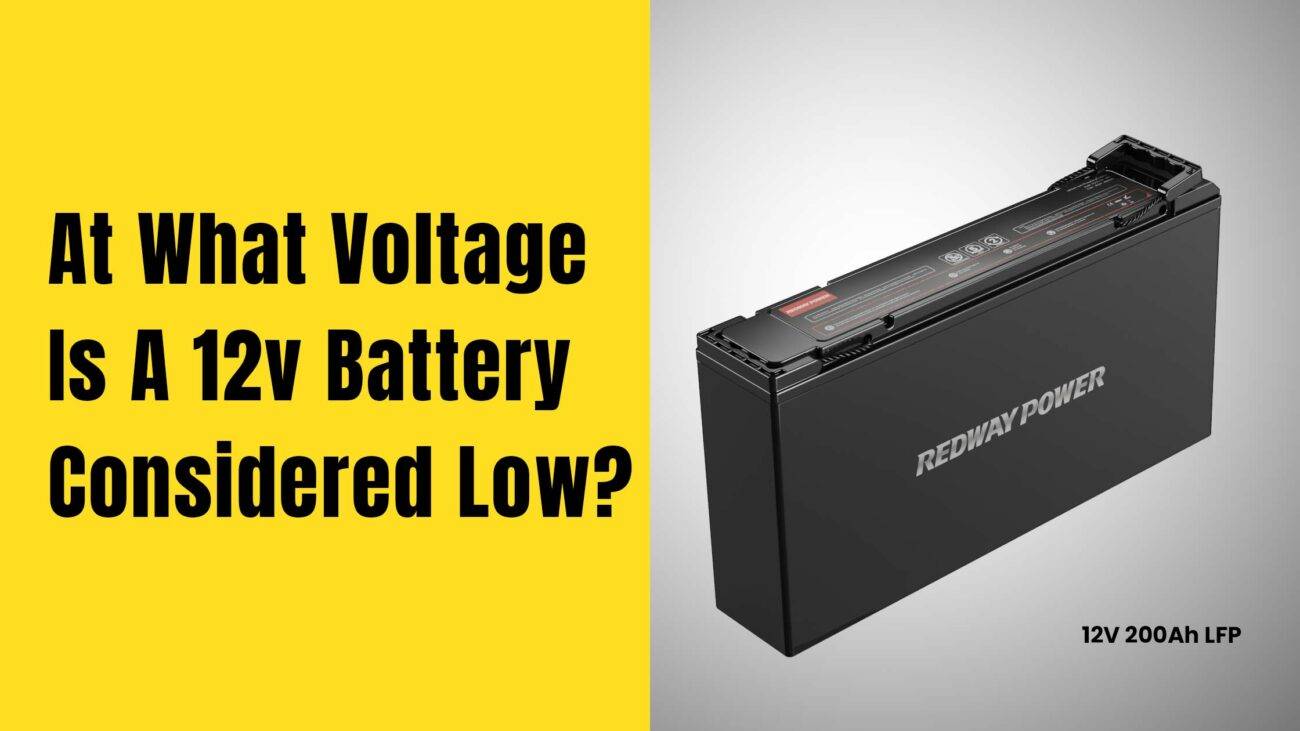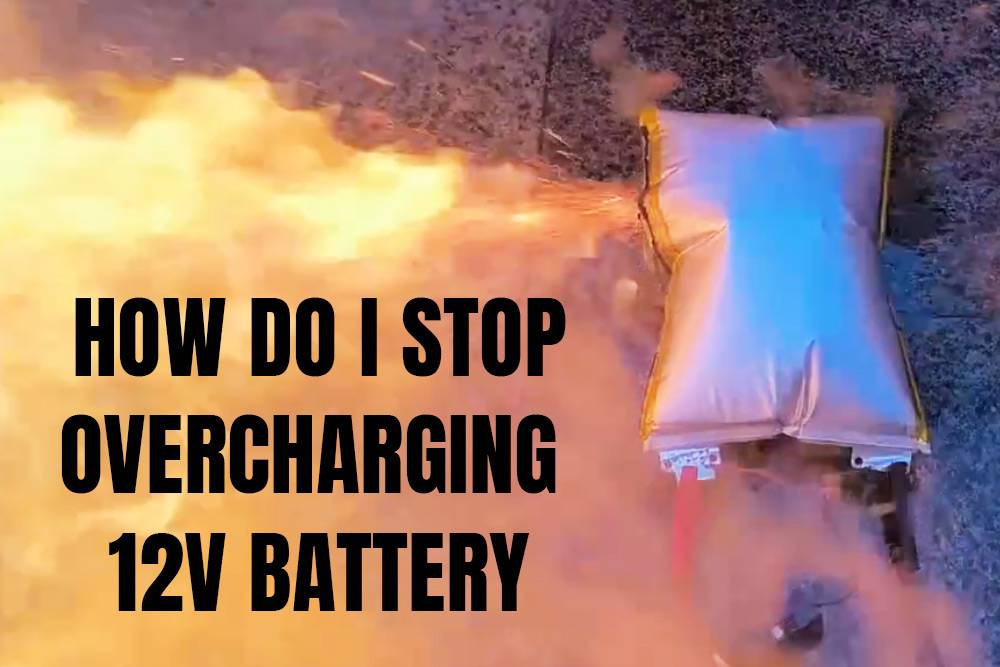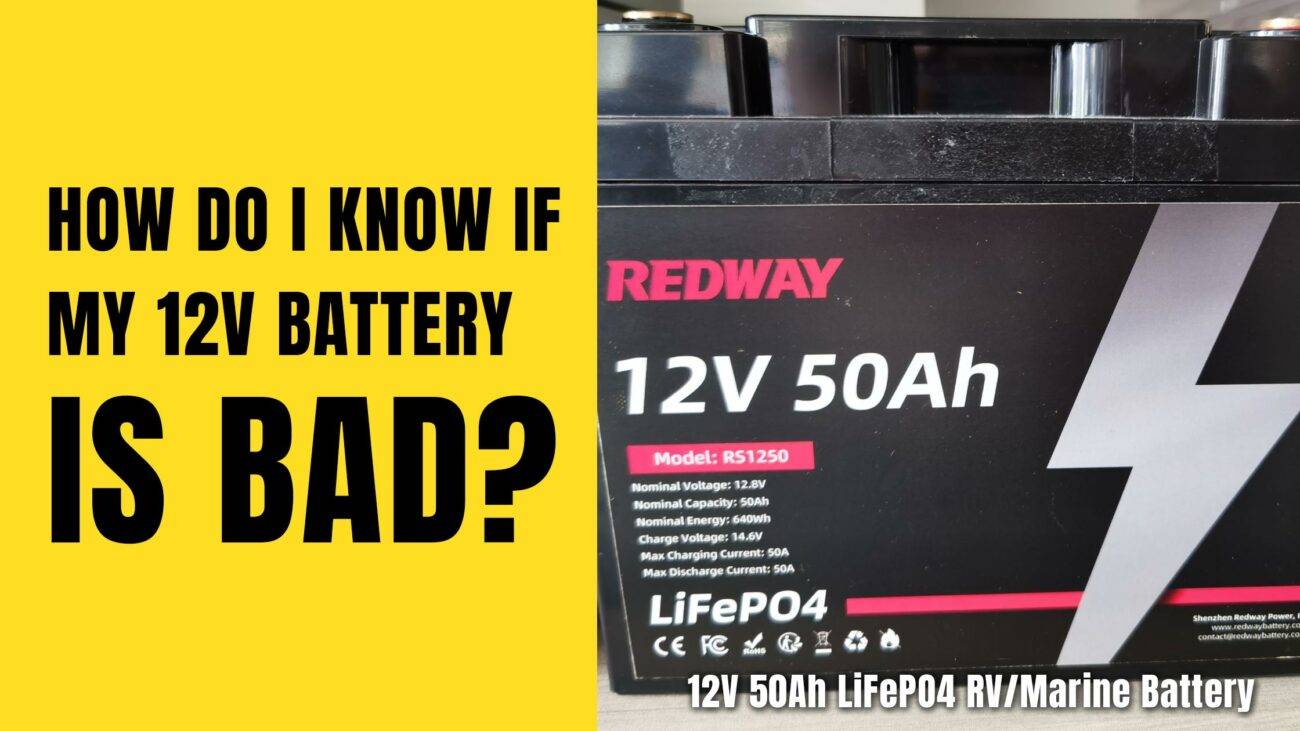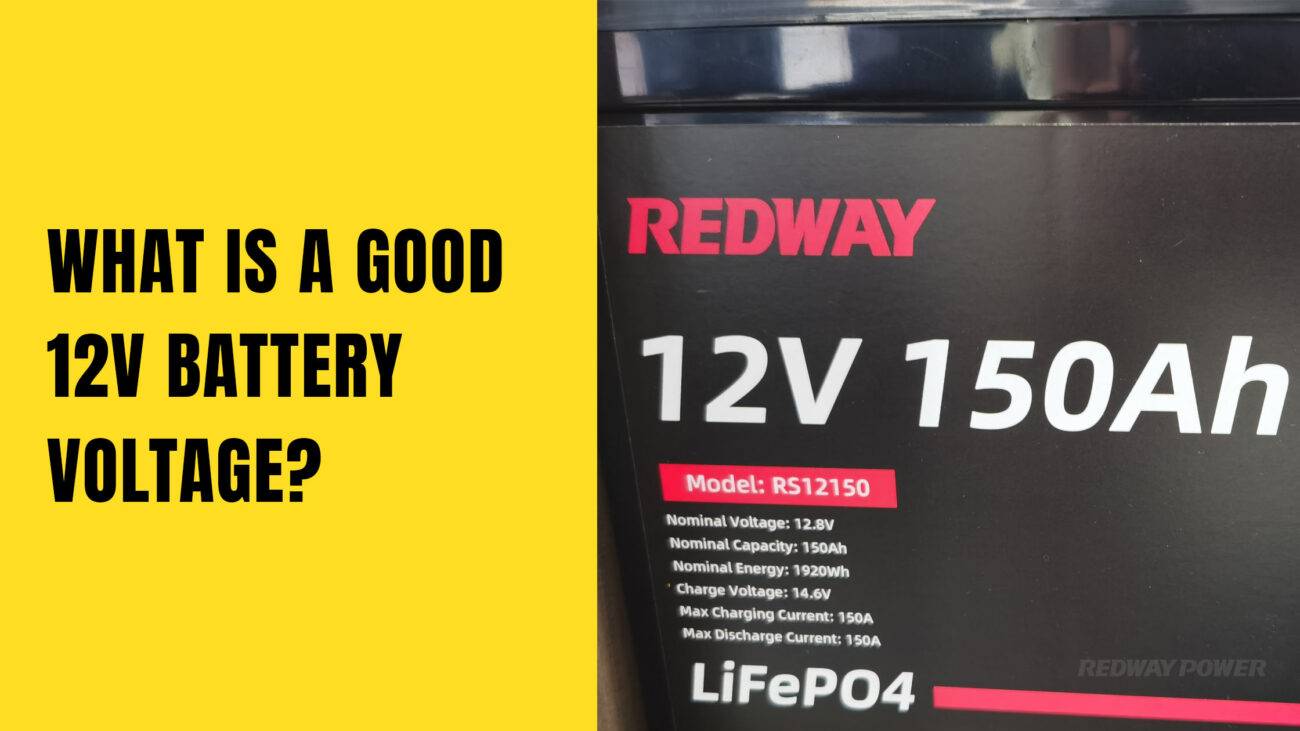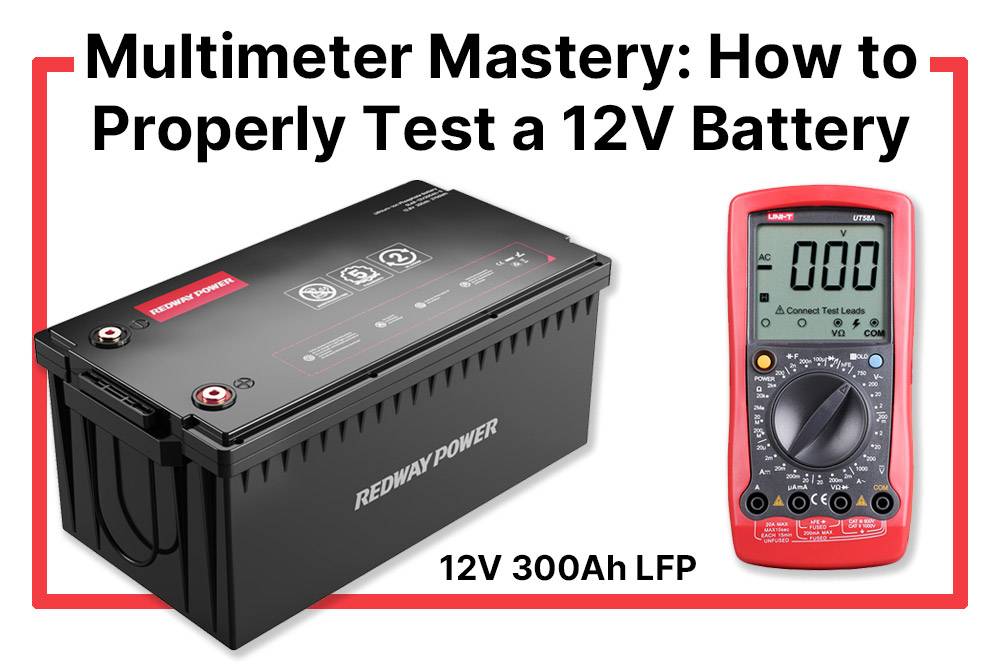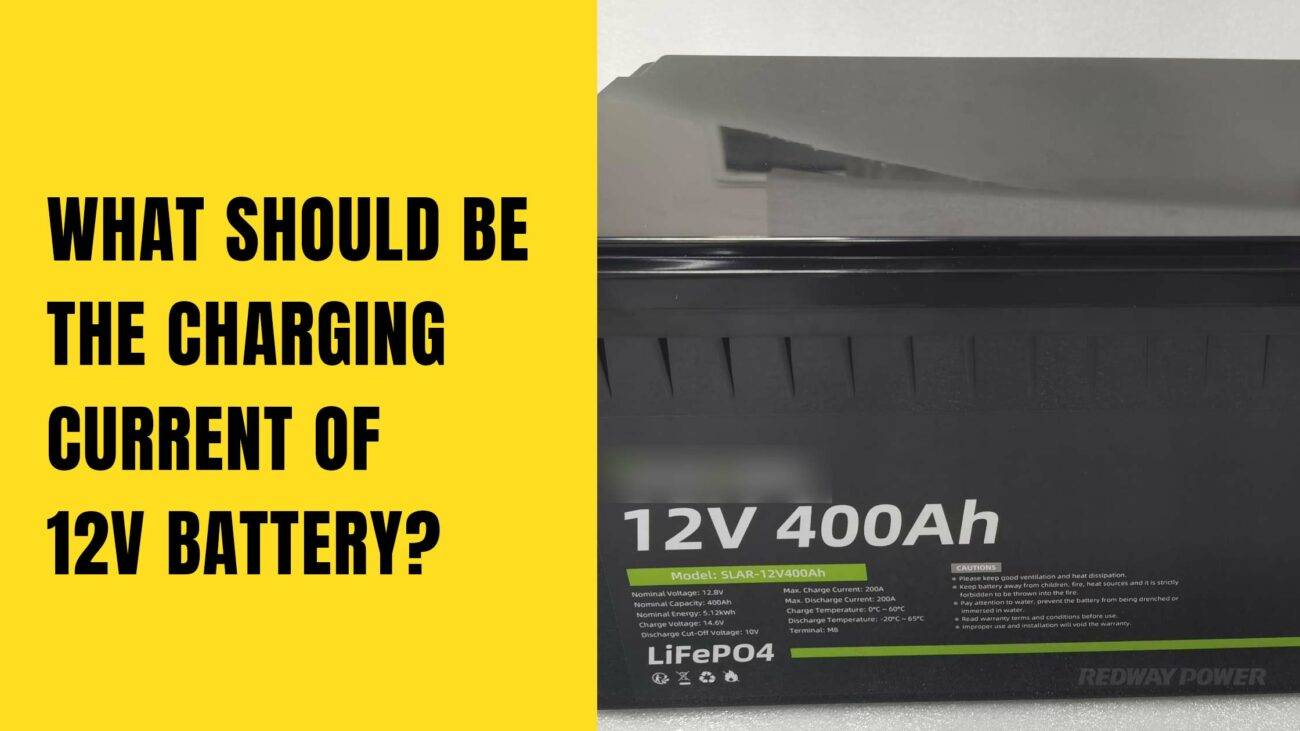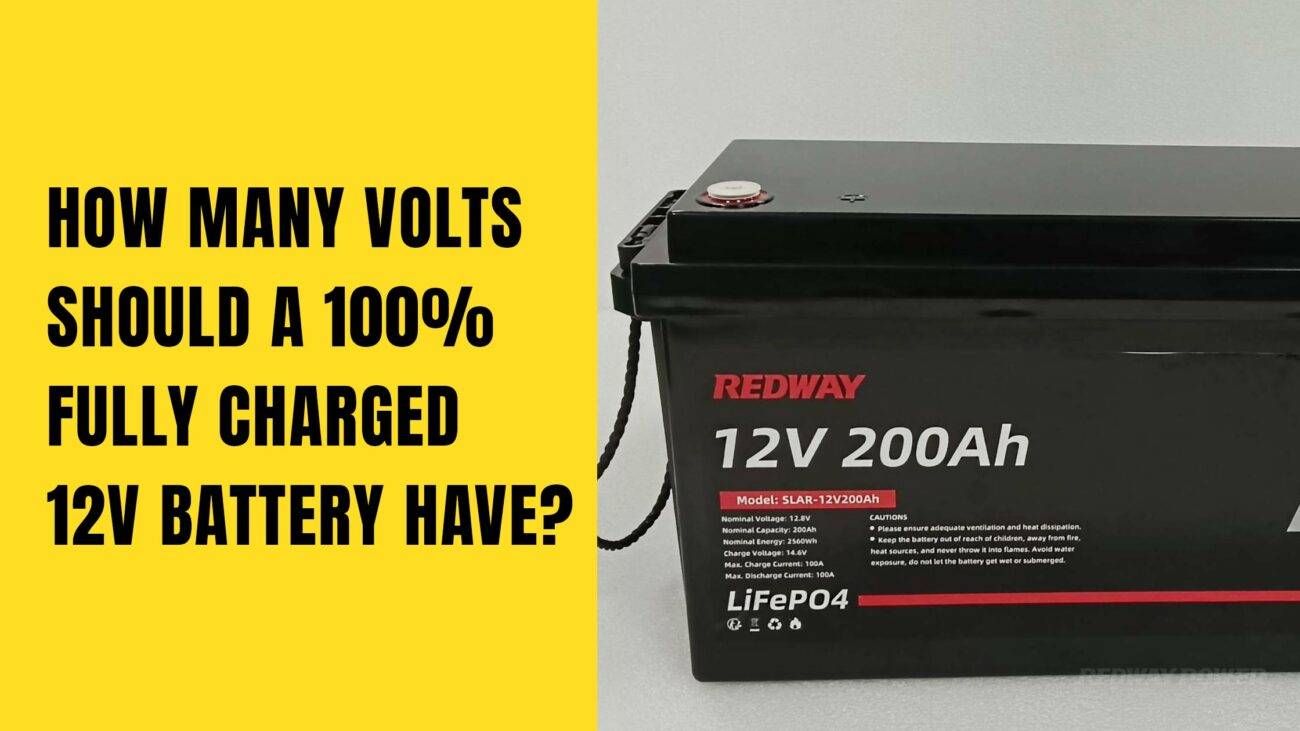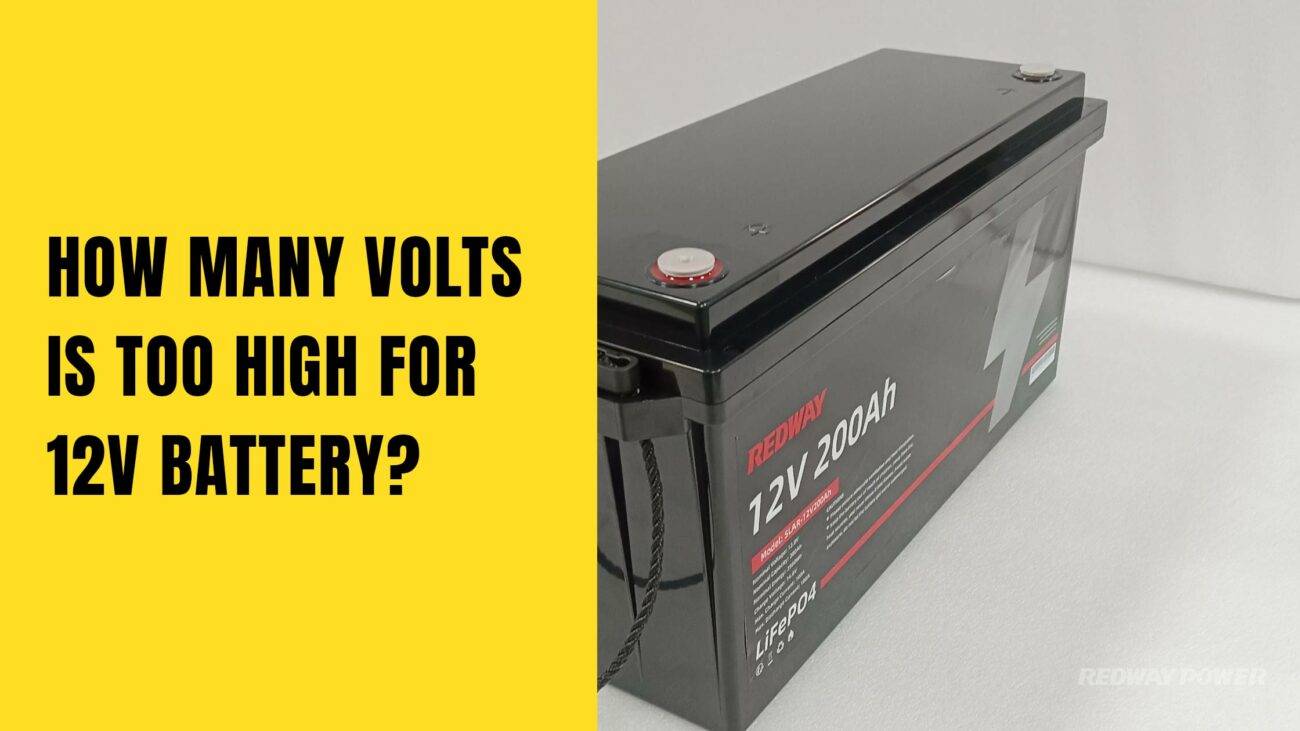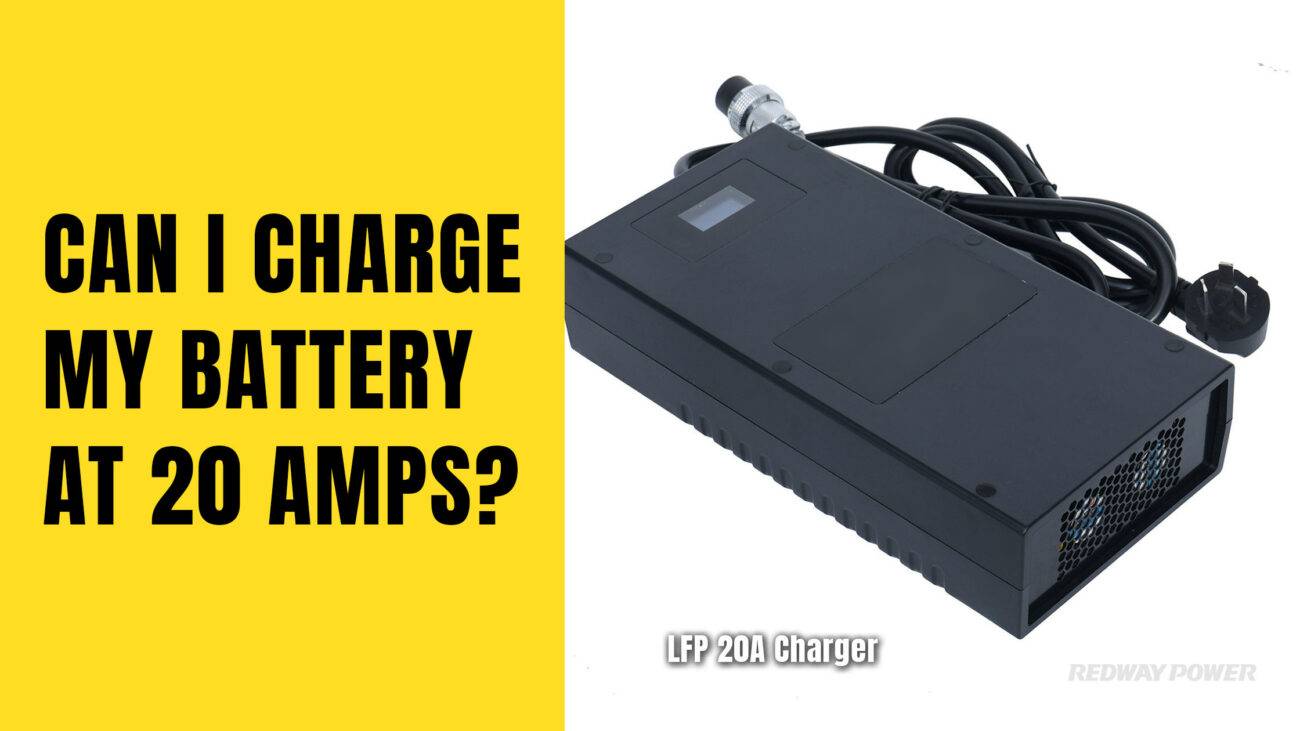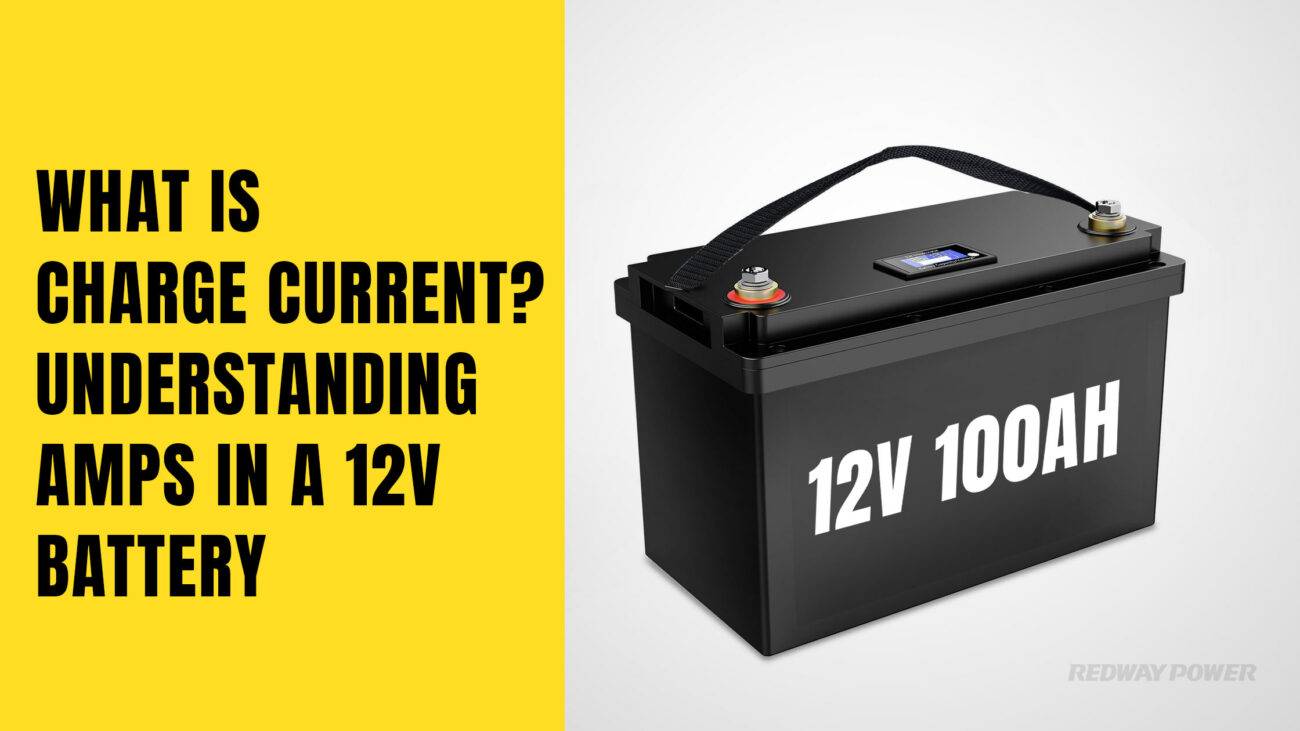Explore our step-by-step guide on charging a 12v battery! Whether for your RV or car, understanding the charging process is key. From powering electronics in RVs to starting car engines, a 12v battery is vital, and our guide will teach you all you need to know for proper charging and maintenance. Let’s dive in and get charged up!
Understanding the Charging Process
Unlock the efficient and safe process of charging your 12v battery with these key steps:
- Gather Equipment:
- Collect a compatible charger and any needed tools for connections or monitoring.
- Ensure you have all necessary equipment before starting the charging process.
- Prepare the Battery:
- Clean the battery, removing debris or corrosion.
- Check water levels if applicable and top up as needed for optimal performance.
- Connect and Monitor:
- Follow manufacturer instructions to connect the charger securely.
- Regularly monitor voltage levels during the charging process using built-in indicators or meters.
- Disconnect and Store:
- Disconnect the battery promptly when it reaches optimal charge levels.
- Follow safety guidelines, avoiding contact with exposed terminals without proper protection.
- Ensure Proper Charging:
- Avoid overcharging or undercharging to prevent damage over time.
- Use chargers specifically designed for 12v batteries for optimal performance and longevity.
By understanding and following each step in the charging process, you’ll maintain healthy batteries ready to power your devices reliably. Charge with confidence and store fully charged batteries in a cool, dry place until needed again!
Step 1: Gather Necessary Equipment
Prepare for efficient 12v battery charging by first gathering essential equipment. Select a charger designed specifically for 12v batteries, ensuring compatibility with your battery type. Choose from various chargers like trickle chargers, smart chargers, or portable jump starters. Additionally, ensure a set of jumper cables or battery clamps in good condition for secure connections.
Keep a clean cloth nearby to wipe battery terminals, promoting proper connectivity. Ensure access to a nearby electrical outlet for a steady power supply during the charging process. This proactive preparation ensures a smooth process, avoiding unnecessary delays or complications. Take the time to gather everything before proceeding to the next step.
Step 2: Prepare the Battery for Charging
Prepare your 12v battery for a safe and efficient charging process by following essential steps. Begin by ensuring a well-ventilated workspace, crucial for dispersing potentially harmful gases emitted during charging. Thoroughly inspect the battery for damage, such as cracks, leaks, or loose connections, addressing any issues beforehand. Clean the terminals using a wire brush or terminal cleaner to establish proper contact with the charger.
After confirming cleanliness and inspection, check your charger for specific 12v battery settings and adjust accordingly. Prior to initiating the charging process, double-check the secure connection of the positive and negative terminals. By diligently preparing your battery, you pave the way for a successful and effective recharge.
Step 3: Connect the Charger to the Battery
Initiate a safe and effective charging process by connecting the charger to your prepared 12v battery. Identify the positive (+) and negative (-) terminals on both the battery and charger to ensure accurate connections. Securely attach the red clamp to the positive terminal and the black clamp to the negative terminal, confirming tight and stable fits. Prioritize secure connections to prevent charging inefficiencies or potential damage. Once all connections are confirmed, plug the charger into a power outlet, ensuring cords are free from water sources or flammable materials.
Successfully connecting the charger to the battery brings you closer to a fully charged 12v battery. The next section will delve into the crucial aspect of monitoring this process closely for optimal charging results.
Step 4: Monitor the Charging Process
After connecting the charger to your 12v battery, closely monitor the charging process for proper and safe operation. Utilize a voltmeter to measure battery voltage, observing an increase as the battery charges. Alternatively, opt for a smart charger with built-in indicators for real-time information on charging status, current flow, and charge levels. Smart chargers often include safety features, such as automatic shut-off upon reaching full charge. Pay attention to warning lights or alarms on the charger, designed to signal issues like overheating or overcharging. Avoid leaving the battery unattended, regularly checking for a smooth charging process.
Careful monitoring ensures the efficient and risk-free charging of your 12v battery. Stay vigilant throughout the process for optimal results.
Step 5: Disconnect and Store the Battery
After fully charging your 12v battery, ensure safe disconnection and proper storage for future use. Prioritize safety by turning off the charger and unplugging it from the power source. Carefully remove clamps starting with the negative (-) terminal, followed by the positive (+) terminal. Inspect terminals for corrosion or damage, cleaning thoroughly if needed. Wipe away any accumulated dirt or debris on the battery’s surface using a soft cloth. Find a cool, dry location for storage, avoiding exposure to extreme temperatures or direct sunlight. Prevent potential damage by refraining from placing heavy objects on the stored battery.
Follow these steps for optimal battery maintenance, promoting a healthy lifespan and trouble-free use in the future.
Common Mistakes to Avoid
Charging your 12v battery requires attention to avoid common mistakes that can impact its performance and lifespan. Here are key points to keep in mind:
- Overcharging Pitfall:
- Avoid overcharging by following the manufacturer’s instructions. Extended connection to the charger can lead to damage, reducing the battery’s overall lifespan.
- Charger Compatibility:
- Always use a charger specifically designed for your 12v battery. Different batteries have distinct charging rate requirements, and using an incompatible charger can harm your battery.
- Safety Precautions Matter:
- Prioritize safety measures during charging. Wear protective gloves, and work in a well-ventilated area to prevent accidents or injuries during the process.
- Prevent Full Discharge:
- Refrain from fully discharging the battery, as it can cause irreversible damage and diminish overall capacity. Recharge before reaching critically low levels to maintain battery health.
- Proper Storage Conditions:
- Store your 12v battery in a cool, dry place away from extreme temperatures and humidity. Exposure to such conditions can affect performance and longevity.
- Regular Cleaning:
- Don’t neglect regular battery cleaning to prevent corrosion buildup on terminals and connectors. Clean terminals ensure proper charging efficiency and extend the battery’s life.
By steering clear of these common mistakes, you ensure the optimal health and performance of your 12v battery throughout its lifespan.
What are the steps to safely charge a 12V battery?
To safely charge a 12V battery, the first step is to ensure you are working in a well-ventilated area free from any flammable materials. Before connecting the charger, double-check that the power source is turned off to prevent any accidents.
Next, inspect the battery for any visible signs of damage or corrosion. If you notice any issues, it’s crucial to address them before proceeding with charging. Clean the terminals if necessary to ensure a good connection.
When connecting the charger, always follow the manufacturer’s instructions carefully. Make sure to match the positive and negative terminals correctly to avoid causing damage to the battery or charger. Once everything is properly connected, turn on the charger and let it do its job.
Monitor the charging progress regularly and never leave a battery unattended while charging. Once fully charged, disconnect the charger and double-check that all connections are secure before using your freshly charged 12V battery!
Can I use a 12V charger to charge a 12V battery?

Curious about whether you can use a 12V charger to charge a 12V battery? The answer is yes, but with caution. While it may seem like a straightforward match, not all chargers are created equal.
Make sure the voltage output of the charger matches the voltage requirements of your 12V battery to avoid overcharging or damaging it. Always check the manufacturer’s guidelines for compatibility before connecting.
Using a charger specifically designed for 12V batteries ensures optimal performance and safety during the charging process. It’s better to be safe than sorry when it comes to prolonging the life of your battery.
When in doubt, consult with a professional or refer to the user manual for both the charger and battery. Taking these precautions will help you charge your 12V battery efficiently and effectively without any hiccups along the way.
What size solar panel is needed to charge a 12V battery?
To determine what size solar panel is needed to charge a 12V battery, you first need to consider the capacity of the battery and how quickly you want it to charge. A general rule of thumb is that a solar panel should have a wattage output that is about 10-20% of the amp-hour rating of your battery.
For example, if you have a 100Ah battery, aim for a solar panel with an output between 10-20 watts. However, it’s always best to consult with a professional or refer to the specific recommendations provided by the manufacturer of your battery.
Remember, when using solar panels to charge your 12V battery, ensure they are positioned in direct sunlight without any shading for optimal efficiency. By following these guidelines and taking proper safety precautions throughout the charging process, you can effectively charge your 12V battery and keep it running smoothly for all your power needs!
Tips for Maintaining a Healthy Battery Life
Maintaining a healthy battery life is crucial for reliable performance. Here are practical tips to ensure the longevity of your 12v battery:
- Avoid Overcharging:
- Disconnect the battery once it reaches full charge to prevent excessive heat build-up, which can diminish the battery’s lifespan.
- Regular Cleaning:
- Clean terminals and connections with a mixture of baking soda and water to eliminate corrosion and dirt, ensuring optimal performance.
- Optimal Storage:
- Store your battery in a cool, dry place away from direct sunlight and extreme temperatures to preserve its performance and lifespan.
- Fluid Level Check:
- For batteries with removable caps, check fluid levels regularly. Top up with distilled water as needed to prevent reduced efficiency and potential damage.
- Trickle Charging:
- If not in use for an extended period, utilize trickle charging to maintain a steady charge without the risk of overcharging.
- Voltage Monitoring:
- Periodically monitor the battery’s voltage using a voltmeter or multimeter designed for automotive batteries to ensure it stays within optimal levels.
By incorporating these tips into your battery maintenance routine, you can significantly extend the life of your 12v battery, ensuring a constant and reliable power supply when needed.
FAQs
How do you charge a dead 12-volt battery?
How do you charge a 12V battery at home?
Can you charge a 12-volt battery with a car charger?
How long does it take to fully charge a 12-volt battery?
More FAQs
Worried about a dead battery?
If you are concerned about the possibility of a dead battery catching you off guard, there’s no need to worry. Simply visit any location where Redway batteries are available, and we’ll quickly and accurately test your battery to determine its remaining life expectancy. We are here to assist you in replacing a weakening battery before it causes any inconvenience or disruption.
Can a totally dead battery get recharged back to full health?
When a battery is completely drained, it cannot be recharged back to 100 percent health. Once a battery’s charge reaches zero percent, irreversible damage begins to occur. While prompt recharging may mitigate further harm and potentially revive some internal components, restoring the battery to full health is unlikely, even with prolonged charging efforts. Instead of attempting to revive a dead battery, it is recommended to recycle it responsibly.
How bad is it if a car battery goes dead?
If a car battery goes dead, it can result in significant damage to the battery. Leaving a car battery at a low charge level for even a few hours can cause permanent damage. So, if you had to jump-start your car, it’s likely your battery was at a low charge for an extended period of time. This can lead to serious and irreparable damage, potentially cutting your battery’s lifespan in half.
Can you charge a car battery sufficiently by driving, and if so, how long and at what speed should you drive?
Charging a car battery sufficiently by driving is a common belief, but the reality is a bit different. While driving can help in some cases, it’s important to understand the limitations. The alternator in a car is not primarily designed to charge the battery; its main job is to power the various electronic components in the vehicle.
Driving at low speeds, such as 40 mph for a short duration with frequent stops, may not provide enough charging to significantly boost the battery. However, driving at higher speeds, around 65 mph, for an extended period can generate enough power to send a worthwhile charge to the battery. This means that a long highway drive at a consistent speed is more effective in charging the battery compared to shorter city trips with frequent stops.
If your car battery is significantly depleted, it may take several hours of driving at highway speeds to raise the charge level significantly. Turning off unnecessary electronics like the AC, radio, and headlights can help redirect more power to the battery, but the impact may not be substantial.
In conclusion, to effectively charge a car battery by driving, consider embarking on a long road trip at higher speeds for several hours. This will allow the alternator to generate enough power to help recharge the battery, although it might not reach a full charge. It’s important to understand the limitations of using driving as a primary method to charge a car battery and to ensure the battery is regularly maintained to avoid potential issues.
What voltage range is a car battery supposed to have, and how does it indicate the state of charge?
A car battery typically operates within a voltage range of 11.80 to 12.88 volts. This range is crucial in determining the state of charge of the battery. A fully charged car battery will read around 12.88 volts, indicating it is at 100% charge. As the battery discharges, the voltage decreases, with 12.64 volts corresponding to 75% charge, 12.39 volts to 50% charge, 12.09 volts to 25% charge, and 11.80 volts representing a fully depleted battery at 0% charge.
It’s important to remember that the voltage of a car battery may vary slightly depending on its state of charge. For accurate readings, it’s recommended to use a digital multimeter rather than a simple analog voltmeter due to the narrow range of voltage differentiation – a mere 1.04 volts – between a fully charged and a dead battery. Additionally, battery chargers can generate voltages higher than the 12.88-volt mark, typically reaching between 13 to 14 volts to facilitate the transfer of power into a partially charged battery. Voltage in this context can be understood as electrical pressure, with a higher voltage needed to push electricity into a battery that already contains some charge.
How can you identify signs of overcharging a car battery and prevent it?
To identify signs of overcharging a car battery, use your senses of smell, hearing, and touch while the battery is charging. If you notice a smell of rotten eggs, hear a hissing sound coming from the battery, or feel excessive heat from the plastic case, these are indications that the battery may be overcharging. Prevent overcharging by ensuring you are using the correct charger settings for your car battery type. Regularly monitor the charging process and never leave the charger connected to the battery unattended. It is essential to take precautions and stay vigilant to avoid overcharging the car battery.
How does a car battery charger work and why does it take time to charge a battery?
A car battery charger operates in three distinct phases to efficiently charge a battery over time. Initially, during the bulk phase, the charger incrementally raises the battery’s charge level without overburdening it, allowing the battery to reach a 75% charge gradually without overheating. This phase mimics the process of blowing air into a balloon: the effort required increases as the balloon fills up.
Moving on to the absorption phase, the charger boosts voltage to fill the remaining 25% of the battery. This phase demands more voltage to complete the charging process as the battery’s voltage levels return to a standard 12 volts. To prevent overheating, the charger manages the voltage increase cautiously, taking hours to ensure a safe and effective charge.
Lastly, in the float phase, the charger maintains the battery’s voltage at 100% capacity until it is ready for use. The charger acts as a trickle charger during this phase, preventing the battery from losing its charge while not in use. By following these three phases – bulk, absorption, and float – a car battery charger can efficiently charge a battery while minimizing the risk of overheating or damage.
What types of battery chargers are recommended for different charging durations?
Different types of battery chargers are recommended for varying charging durations. For a quick charge within 10-24 hours, it is advisable to use a smart or automatic charger that can adjust its charging voltage accordingly. These chargers are suitable for batteries that are moderately weak and can ensure the battery is fully charged at the end of the duration.
On the other hand, if you require a slower charge over several days to a week, a trickle charger is recommended. These chargers deliver a steady trickle of power, which may be solar-powered or plug into a wall outlet. They use fewer amps but can still effectively charge the battery over a longer period of time.
For extended charging periods spanning months, battery maintainers are the ideal choice. Unlike chargers, maintainers do not actively charge the battery but rather ensure that the battery retains its charge level over an extended period. By using a maintainer after charging the battery to a certain percentage, such as 75%, the battery’s charge can be preserved for significant durations without any risk of overcharging.
What precautions should be taken before recharging a car battery?
Before recharging a car battery, it is important to take several precautions to ensure safety and prevent any potential damage. Here are some steps that should be followed:
1. Always work in an outdoor area or a well-ventilated space to avoid the build-up of harmful gases.
2. Remove any jewelry, wear protective gloves, and put on safety glasses to protect yourself from potential accidents or exposure to hazardous materials.
3. Carefully plug in the charger, making sure to follow any specific instructions provided for your particular charger model.
4. Connect a backup battery to the On-board Diagnostics II (OBD-II) port to ensure that the car’s onboard computers remain powered at all times. This prevents the loss of memory in the computers, which could lead to various car issues, such as erratic idling behavior.
5. Prior to recharging, disconnect the car’s negative terminal, which is typically black. Ensure that the terminal is properly insulated with a rag or glove to prevent it from touching any other surfaces. This step is crucial for protecting the car’s electronics from the charging voltage.
When might you need to charge your car battery?
There are several instances when you might need to charge your car battery. These include after jump-starting your car, experiencing unusual behavior in your accessories, accidentally leaving an interior light on overnight (even if the car still starts), noticing a different sound when starting the ignition, or if your car had a slow or sluggish start recently. Paying attention to these signs can help you determine when it’s time to charge your car battery.
How long does it take to charge a car battery?
The time required to charge a car battery can vary depending on factors such as the type of charger being used and the current condition of the battery. In general, it may take anywhere from 4 to 24 hours to fully charge a car battery. Using a standard charger, it could take around 4 to 8 hours to charge the battery enough to start the car a few times, while a full charge up to 100 percent may require 10 to 24 hours. It is important to note that the longer the battery is charged, the more power and strength the battery charger can provide to the car battery.
Is it recommended to charge a car battery using jumper cables, and why is it not an effective method?
Charging a car battery using jumper cables is not a recommended method according to the information provided in Passage_1. The text explains that attempting to charge a car battery with jumper cables can lead to potential issues. The current from the functioning car passes directly through the dead car’s battery to start the dead car. Despite common misconceptions, revving the functioning car’s engine does not substantially charge the dead car battery. Although revving increases the voltage and amperage flow, it does not effectively charge the dead battery. Essentially, using jumper cables to charge a car battery is not an efficient method and only results in the expenditure of fuel without achieving the desired outcome of charging the dead battery.
How long does it take to charge a 12v battery at 2 amps?
To determine the time it takes to charge a 12-volt battery at 2 amps, you need to consider the battery’s capacity and current charge level. For example, a 50 ampere-hour (Ah) battery being charged at 2 amps will take approximately 25 hours to fully charge. It is important to note that this is an estimate and the actual charging time may vary based on factors such as the initial charge level of the battery, the efficiency of the charger, and other variables involved in the charging process. To prevent overcharging once the battery is fully charged, it is recommended to use a charger equipped with an automatic shut-off feature.
How to use a battery charger 12v?
Certainly! When using a 12v battery charger, it is important to first select a charger that is compatible with your battery type and capacity. Ensure that you work in a well-ventilated area away from any potential fire hazards. Assemble the charger by connecting the positive and negative clamps to the corresponding terminals on the battery.
Before plugging in the charger, make sure to set it to the appropriate voltage and charging mode. Monitor the charging process closely and be on the lookout for any signs of overheating or unusual behavior.
Once the battery is fully charged, disconnect the charger starting with the negative clamp. Following these steps not only helps in prolonging the battery life but also ensures a safe and effective charging process for your 12v battery.
How do I know my 12v battery is fully charged?
To determine if a 12V battery is fully charged, you can monitor both the voltage and current levels during the charging process. Initially, the battery’s voltage will steadily rise as it charges. However, keep in mind that factors like recent use or cold temperatures may cause the voltage reading to be slightly lower. Observing the charging current is also important; when the current decreases significantly, typically to around 1-3% of the battery’s capacity, it is a good indicator that the battery is fully charged.
What size solar panel to charge 12v battery?
Determining the appropriate size of a solar panel to charge a 12-volt battery depends on various factors such as the capacity of the battery, the amount of sunlight exposure available, and the energy consumption requirements. In general, a 20-watt to 50-watt solar panel may be sufficient for maintaining smaller 12-volt batteries, while larger batteries, such as those found in extensive energy storage systems, may require a panel with a wattage range of 100 to 200 watts. To accurately determine the ideal panel size, it is essential to assess your daily energy needs and consider the average sunlight hours in your location. Additionally, utilizing a charge controller is crucial to prevent overcharging and ensure the longevity of the battery.
Can I charge my 12v battery without a charger?
Certainly! Yes, you can charge a 12V battery without a traditional charger by using a solar panel. Solar panels harness the sun’s energy to replenish your batteries, making it a sustainable option. To charge a 12V battery effectively with a solar panel, you need to select one with an output voltage slightly higher than 12V. By connecting the solar panel’s positive and negative terminals to the corresponding terminals on the battery, you can initiate the charging process.
To prevent overcharging and ensure the battery’s longevity and safe charging, it is essential to use a charge controller. This device regulates the voltage and current flow from the solar panel to the battery. Placing the solar panel in direct sunlight maximizes charging efficiency.
Using a solar panel to charge a 12V battery without a traditional charger is a feasible DIY option. However, for secure and efficient charging, employing a charge controller is crucial. While RV solar panels offer convenience, using an appropriate 12-volt battery charger is recommended to ensure safe and effective charging.
How to select the correct 12v battery charger?
Step 1: Gather Necessary Equipment
Prepare for efficient 12v battery charging by first gathering essential equipment. Select a charger designed specifically for 12v batteries, ensuring compatibility with your battery type. Choose from various chargers like trickle chargers, smart chargers, or portable jump starters. Additionally, ensure a set of jumper cables or battery clamps in good condition for secure connections.
Step 2: Understand Your Battery’s Needs
Before selecting a charger, it is crucial to determine your battery’s capacity and type. Select a charger with a voltage rating of 12 volts to match your battery’s requirements. Check that the charger’s amperage output is sufficient but not excessively high, as this could potentially harm the battery.
Step 3: Consider Additional Features
To enhance your battery care routine, look for chargers with extra features like automated shut-off and maintenance modes to prevent overcharging. For long-term maintenance, a trickle charger is recommended, while a quicker charger may be more suitable for sporadic use.
Step 4: Ensure Proper Connection and Power Supply
Keep a clean cloth nearby to wipe battery terminals, promoting proper connectivity. Ensure access to a nearby electrical outlet for a steady power supply during the charging process. This proactive preparation ensures a smooth process, avoiding unnecessary delays or complications. Take the time to gather everything before proceeding to the next step.”<
How to use a battery charger for a 12v battery?
Charging your 12v battery need not be intimidating; armed with the right equipment and knowledge, it becomes a safe and straightforward process. Following our step-by-step guide ensures proper charging, enhancing battery longevity and optimizing performance.
Prioritize safety by gathering essential equipment, including a compatible charger, safety goggles, gloves, and maintaining a well-ventilated workspace. Preparing the battery involves thorough cleaning and inspection for damage before connecting the charger attentively.
There are various processes involved in using a 12-volt battery charger. First, ensure the location is sufficiently aired to prevent gas buildup. Decide which terminals on the battery and charger are positive and negative. Positive and negative terminals of the battery should be connected to the charger’s red and black clamps, respectively. Consider considerations like battery type and size while choosing the charging mode on the charger and plugging it in. Watch the procedure carefully to prevent the battery from overheating.
During the charging process, vigilant monitoring is key to prevent overcharging. Start by unplugging the negative clamp of the charger after the battery reaches the recommended voltage. Disconnecting and storing the fully charged battery correctly, free from extreme temperatures, safeguards its health between uses.
The 12-volt battery charger is safe and effective if you follow the instructions and take the necessary safety measures. Avoid common mistakes and adopt regular maintenance practices for a robust 12v battery life, ensuring reliability whenever needed.
How long does it take to charge a 12v battery?
After connecting the charger to your 12v battery, closely monitor the charging process for proper and safe operation. How to charge a 12v battery and the time it takes to charge depends on various factors, such as the battery’s capacity, the charger’s amperage, and the battery’s present condition. Utilize a voltmeter to measure battery voltage, observing an increase as the battery charges. Typically, it takes 4 to 5 hours to fully charge a 12-volt automobile battery with a 50-ampere-hour (Ah) capacity when using a 10-amp charger. Alternatively, opt for a smart charger with built-in indicators for real-time information on charging status, current flow, and charge levels.
Smart chargers often include safety features, such as automatic shut-off upon reaching full charge. Pay attention to warning lights or alarms on the charger, designed to signal issues like overheating or overcharging. Although factors like battery age and initial charge level might alter this, a general rule of thumb is to divide the battery’s Ah rating by the charger’s amperage. Use a charger with an automated shut-off option or a maintenance mode after the battery achieves full charge to prevent overcharging and damage. Avoid leaving the battery unattended, regularly checking for a smooth charging process. Careful monitoring ensures the efficient and risk-free charging of your 12v battery. Stay vigilant throughout the process for optimal results.
Do I need a special charger to charge a 12v battery?
When it comes to charging a 12v battery, always use a charger specifically designed for your battery. Different batteries have distinct charging rate requirements, and using an incompatible charger can harm your battery. It’s crucial to ensure that the charger you select is compatible with your 12v battery to prevent any potential damage. Prioritizing the right charger for your battery type will help maintain its longevity and performance.

